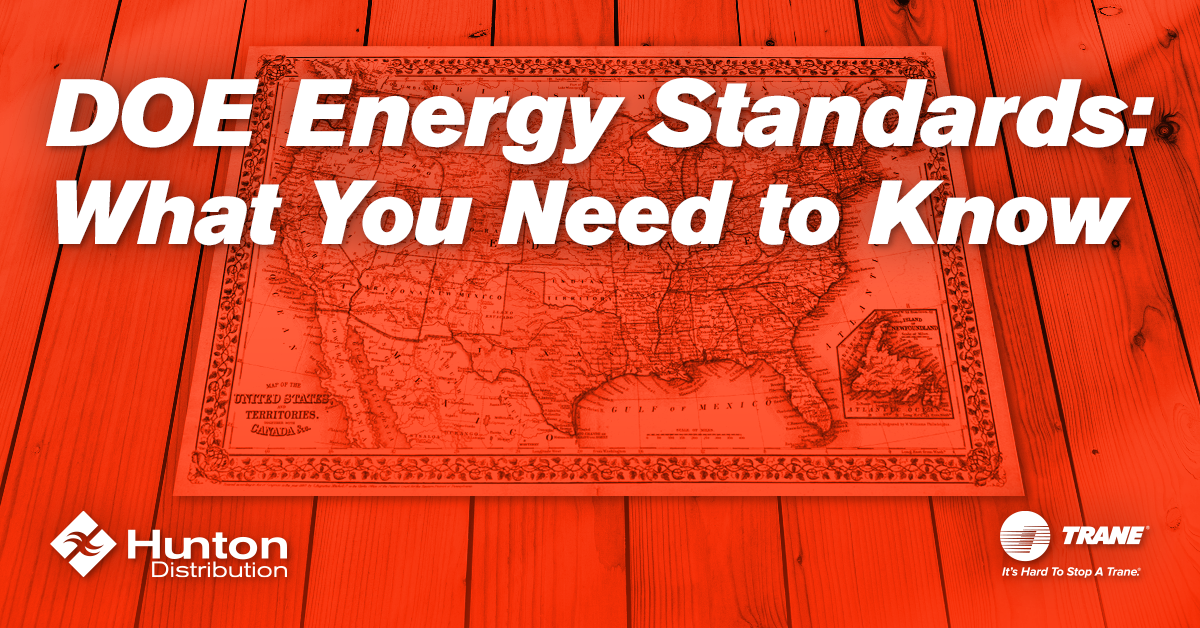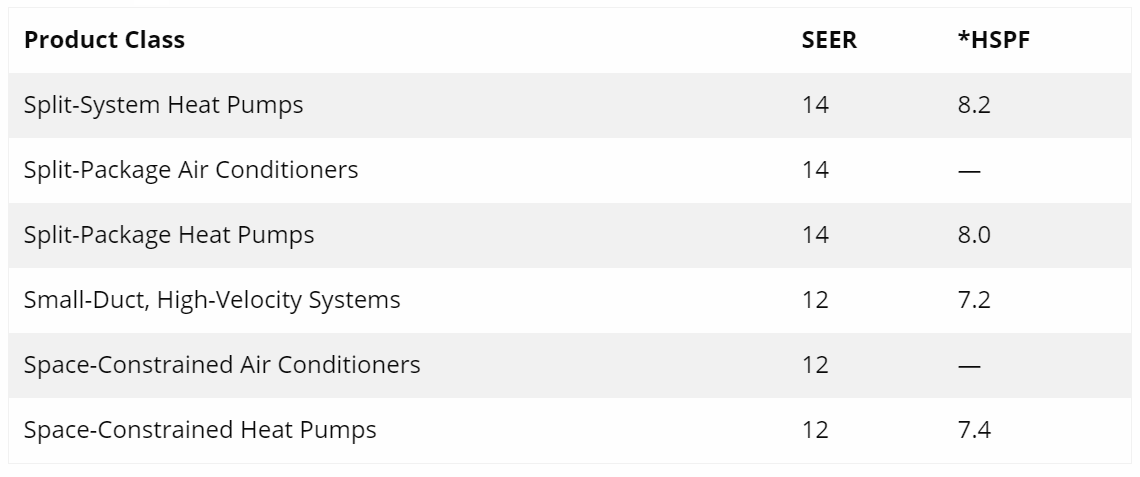
DOE Efficiency Standards: What You Need to Know
Where you live in the U.S. determines which air conditioners and heat pumps you can shop for — in a good way!
DID YOU KNOW THAT WHERE YOU LIVE IN THE UNITED STATES HAS AN IMPACT ON WHICH HVAC PRODUCTS YOU CAN BUY?
That’s because the U.S. Department of Energy (DOE) has placed minimum energy efficiency standards on the appliances and equipment we use at home every day. This includes air conditioners, washers and dryers, refrigerators and more.
Why is this good news?
Because the standards are helping us save energy at home, as well as money on utility bills. They work so well that a 2017 report from the Consumer Federation of America showed that these standards have saved consumers over $1 trillion dollars.
WHAT DOES THIS MEAN WHEN YOU’RE SHOPPING FOR COOLING AND HEATING EQUIPMENT?
It means that when you’re buying a new HVAC system, minimum energy efficiency standards influence which air conditioners and heat pumps HVAC dealers are allowed to sell to you, based on your region. Even if a company carries products with lower energy efficiency ratings, it doesn’t mean they can sell those products everywhere in the U.S.
Why do regions matter?
Because there are different standards based on the climate needs of customers living in the North, Southeast, and Southwest regions. Since people living in southern climates use their air conditioners more often, they require more energy efficient systems. But the rules get even more complex. The Southeast standards only apply to split-system air conditioners. And the Southwest standards apply to split-system air conditioners and single-package air conditioners. So, let’s keep this simple.
HERE ARE THE 3 KEY THINGS YOU NEED TO KNOW.
1. The DOE regional breakdown by state
Southwest: Arizona, California, Nevada, or New Mexico
Southeast: Alabama, Arkansas, Delaware, Florida, Georgia, Hawaii, Kentucky, Louisiana, Maryland, Mississippi, North Carolina, Oklahoma, South Carolina, Tennessee, Texas, Virginia, the District of Columbia, and the U.S. territories
North: The remainder of the United States
2. The minimum efficiency standards for split-system air conditioners by region

3. The minimum efficiency standards for heat pumps and other types of central air conditioning
 *HSPF is the Heating Seasonal Performance Factor. The higher the HSPF rating, the less electrical energy your heat pump uses to heat your home.
*HSPF is the Heating Seasonal Performance Factor. The higher the HSPF rating, the less electrical energy your heat pump uses to heat your home.
The bottom line?
You should always ask your dealer about the SEER, EER and HSPF ratings of the equipment they are recommending — just to make sure they match your region’s requirements. It’s illegal for them to sell you a new system that falls below the standards, even if you ask them to.
When it’s time for you to get a new central air or heat pump system, working with your local Trane Comfort Specialist™ will ensure that your equipment meets the minimum standards for your region and you’ll have a solid selection of energy efficient systems to choose from.
For more details on air conditioner and heat pump efficiency standards:
check out this helpful fact sheet from the DOE. Or read the Environmental and Energy Study Institute’s report on requirements for all appliances, lighting and equipment — this includes info about ENERGY STAR qualified appliancesand what to consider when building your energy efficient dream home.
DOE ANNOUNCES FAN ENERGY RATING STANDARD FOR FURNACES
The Department of Energy has introduced new efficiency standards for furnaces that you should be aware of before buying. The Fan Energy Rating (FER) sets a minimum airflow efficiency standard for residential furnace fans. As of July 3, 2019, furnaces can no longer be manufactured unless they meet the minimum efficiencies. These new guidelines are in place to encourage energy efficiency and help the environment.
What will the new FER standards accomplish?
The US Department of Energy predicts the new standard for furnace fans will:
- Save approximately 3.99 quads of energy.
- Reduce carbon pollution by up to 34 million metric tons (equivalent to the electricity use of 4.7 million homes).
- Save Americans more than 9 billion in home electric bills through 2030.
What is Trane doing in response to the new standards?
As an industry leader in home comfort energy efficiency and HVAC innovation, many Trane furnaces already meet or surpass the new FER standards. However, Trane has committed to making some efficiency-boosting alterations to our line of furnace products as well as introduce new ones so you get the comfort and efficiency you deserve.
- Upgrading our motor technology from PSC to ECM.
- Creating a new version of our Patented Vortica blower. Our new Vortica II blower is FER-compliant and will be included with all of our new S-Series furnaces
- Introducing new furnace models that meet the new standard. Ask your dealer for information on what models are available in your area.
- Discontinuing models that don’t meet the new standard.
ONE LAST TIP
Talk to your local Trane Comfort Specialist to learn more about DOE energy regulations and what HVAC product is best for you.

